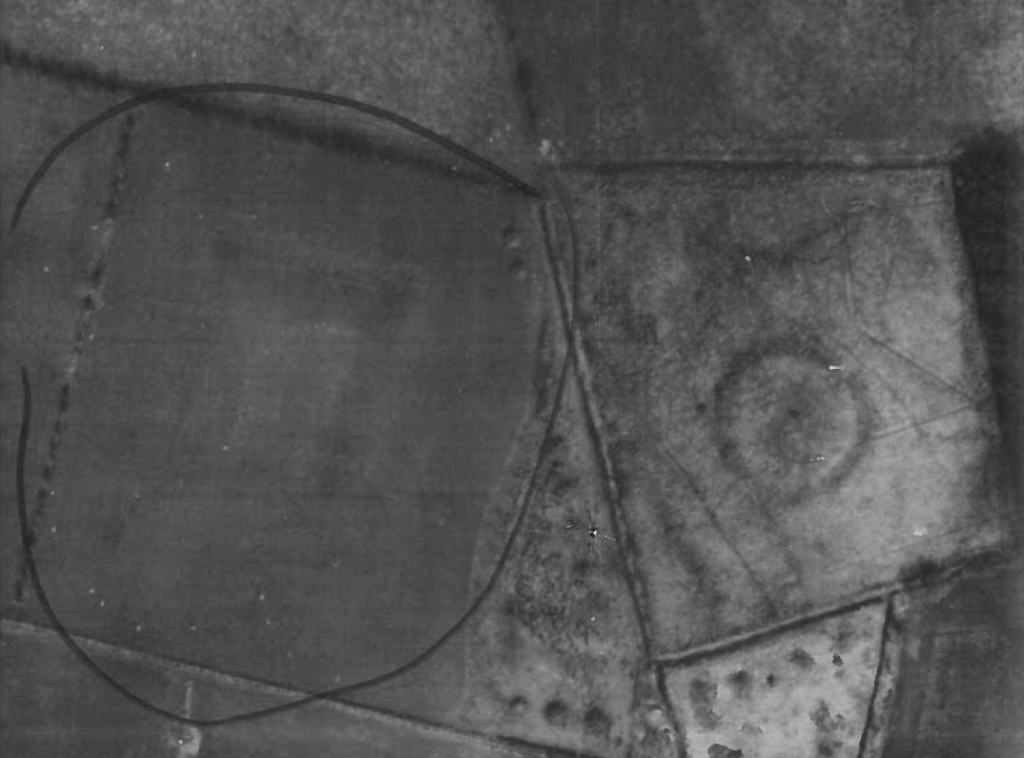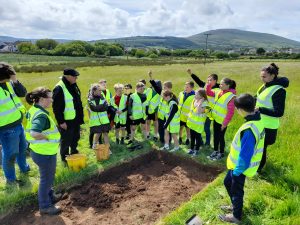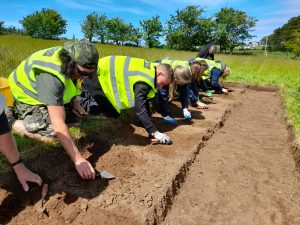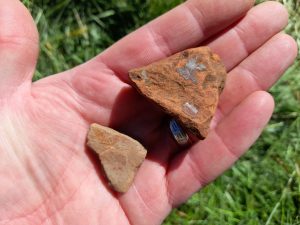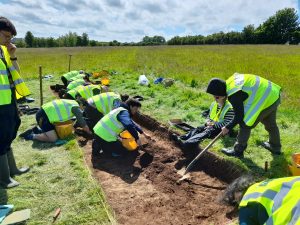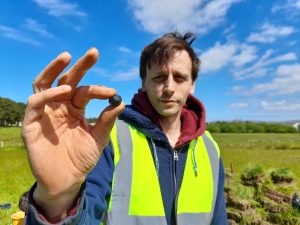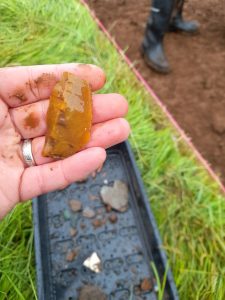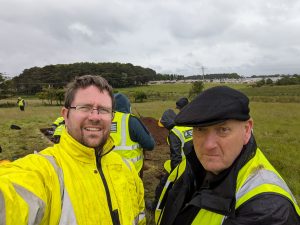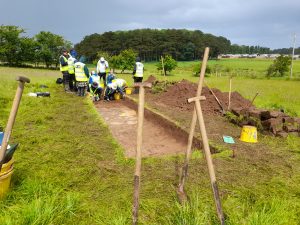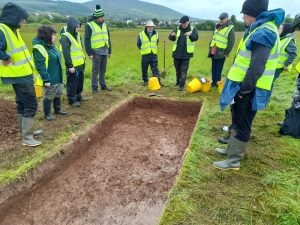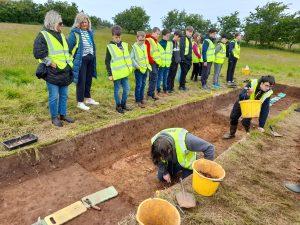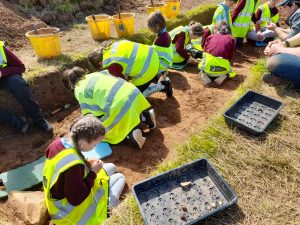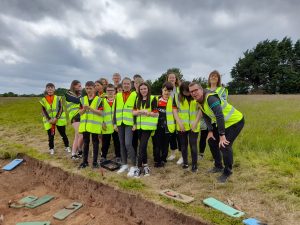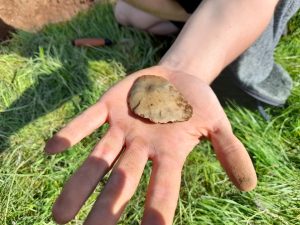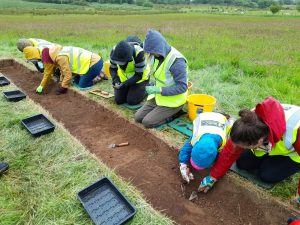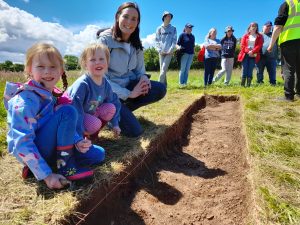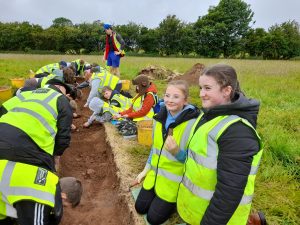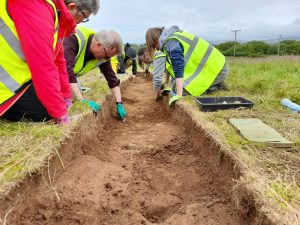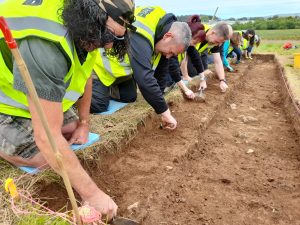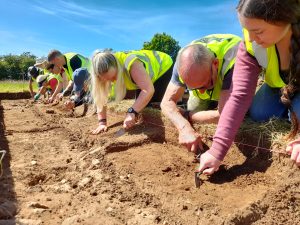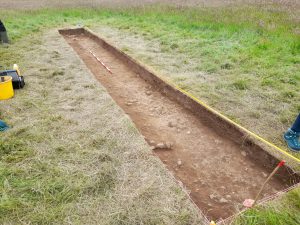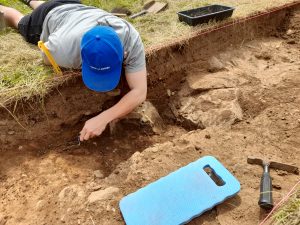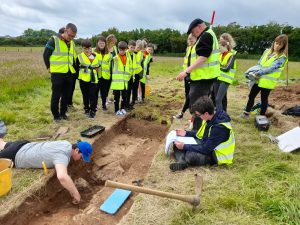Clare Castle community archaeology project

Celebrating 200 years of the RNLI
26th June 2024
Pop-up Museum with Portrush Heritage Group & Causeway Coast and Glens Museum Services
21st August 2024Clare Castle community archaeology project
As part of our Ballycastle Museum restoration and extension programme, supported by The National Lottery Heritage Fund, Causeway Coast and Glens Museum Services worked in partnership with Queen’s University Belfast’s Centre for Community Archaeology to search for evidence of Clare Castle, one of several lost castles in the Ballycastle area.
The initial project was prompted by a report on the Northern Ireland Sites and Monuments Record (ANT:004:123). The report proposes the presence of a 17th century bawn – a type of fortified residence – in a field in the townland of Clare to the west of Ballycastle. Our project set out to test the theory that the site was a bawn, and to propose that the structure was the same as the missing Clare Castle, the 17th century home of the McNeill family who held the title, ‘Constable of Dunineny’.
Based on a combination of archival research carried out by Colm Donnelly from Queen’s University Belfast, the aerial photograph taken in 1983, and geophysical surveys, two trenches were opened up. Trench 1 went across what was presumed to be the northern outer fortifications, and trench 2 was placed further southwest (and up hill), within the perimeter of the square feature where it was thought the internal residence might have been.
Over the course of a two week excavation in June 2024, 286 local people participated in the project – most getting their hands dirty by helping directly with the excavation. that’s roughly 5% of the population of Ballycastle. It was brilliant to see this sort of enthusiasm for the project, and especially great to see the five Ballycastle Schools and the local home school community all taking part.
Trench 1
After extensive digging, extending of the trench, head scratching, and more digging, trench 1 didn’t quite deliver on its offer of fortifications…
However, what we lacked in structures, we made up for in artefacts recovered from the plough zone. These included early modern brick fragments, roofing slates, pottery dating from the 17th-20th centuries, 17th and 18th century tobacco pipe bowls, prehistoric flints, and an enigmatic glass or jet bead which is pre-industrial, but unclear at present whether 200 or 4,000 years old…
Trench 2
The second trench sat over a large disturbed area in the geophysical survey, looking a little less promising on paper and the initial slot trench was very narrow.
Trench 2 also included brick and slate fragments and a scattering of modern pottery, together with more prehistoric flints and a number of sherds of prehistoric pottery. However, when the trace remains of two walls were uncovered, the trench was widened to give a better picture of what was going on.
On the final day of digging we came down onto two fairly substantial wall foundations from what is thought to be a Medieval house. This does not seem to be the castle residence that we thought might have been there, but something much rarer, so certainly something of note.
Colm Donnelly and the team from QUB have now taken away all the finds for cleaning and study. For now we can only say that, while the castle has eluded us, we only opened two small trenches, so the evidence may still be there below the grass. The range of finds provides evidence for at least 6,000 years of human occupation in the immediate area!
Our thanks to everyone who has been involved in the project, from the amazing landowners who generously allowed us to interrupt their lives, the great group of student archaeologists from QUB, all of the Ballycastle schools and the home schoolers who came out to participate, and our truly wonderful volunteers who came out every day to suffer the weather and help piece together another part of their local heritage.



